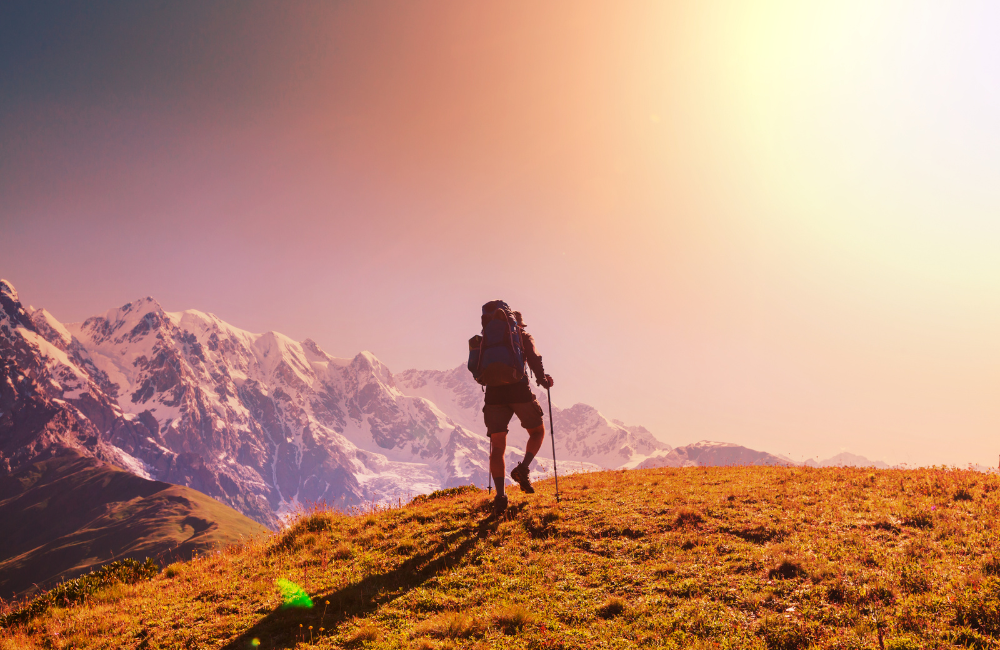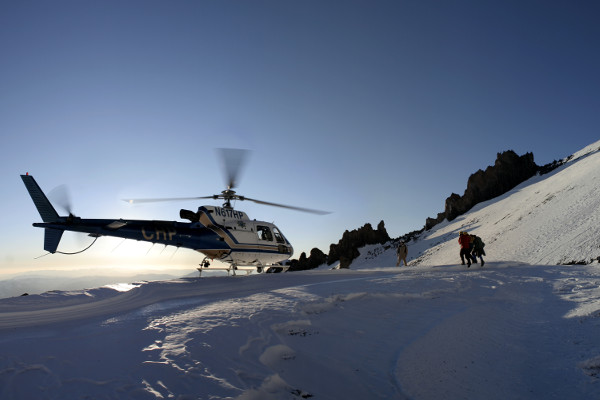In this article we provide detailed information on travel and trekking insurance.
If you plan to trek at high altitude (up to 6,000 meters) then this article will provide accurate information on key hiking insurance considerations.
Anyone looking to undertake mountaineering activities (i.e. climbing with ropes, crampons or ice axes) should seek specialist insurance like that offered by the British Mountaineering Club. Please remember to read the small print on all policies before purchasing.
Disclaimer: We are not trekking insurance experts. The information provided below is based on our personal experience as well as from recommendations from other trekkers. Please seek professional insurance advice if you are uncertain of any policy wording or limitations.

Get trekking insurance!
I recommend the adventure travel insurance specialist, Rise & Shield.
Hiking Travel Insurance
Key Considerations
Below we have highlighted the five main trekking insurance considerations.
1: High Altitude
Trekking in mountainous regions usually involves going to high altitudes. For example, if you plan to do an Everest Base Camp trek or reach the summit of Kilimanjaro you will trek to an altitude above 5,500 meters. Many other popular treks get up to 4,500 – 5,000 meters.
At these altitudes, traditional travel insurance just doesn’t cut it. Some insurance providers will cover you up to 3,000 meters, which is great for the alps, but not the Himalayas, Kilimanjaro or Aconcagua.
Why do standard insurance packages not cover high altitude trekking?
The answer is simple: the risk of Acute Mountain Sickness (AMS), and its severe forms of cerebral and pulmonary edema, increase dramatically above 2,800 meters, as do the costs of emergency medical services and evacuation.
This means that you have to specifically select a trekking insurance package that will cover you at high altitudes. For places such as Nepal, Alps, Andes (e.g. Inca Trail treks) or Africa (e.g. Kilimanjaro), we recommend you get cover up to 6,000 meters.
2: Hiking Accidents
It’s not nice to think about, but accidents do happen regularly on trekking expeditions. Mountains, even when not being climbed, can be dangerous. Falls, rock slides and health complications (e.g. a pre-existing heart condition) can result in serious injury or death.
Even basic injuries like a twisted ankle, can create complications in terms of evacuation at high altitude.
You should ensure that your travel and trekking insurance covers the cost of emergency evacuation or medical assistance should you need one or both on a mountain trek, as well as hospitalisation in whichever country you are hiking in.
3: Off Mountain Accidents and Illnesses
Off mountain accidents and illnesses are of course a risk – the most common being illness associated with gastro issues (hygiene standards are not great in many countries).
Your travel and trekking insurance should cover any accidents and illnesses that can occur whilst abroad.
4: Stolen, Delayed, Damaged or Lost Baggage
There is nothing worse than arriving in a new country only to discover that your baggage has been lost, delayed or damaged. This can be a particularly costly and irritating issue if you are carrying loads of expensive and much needed trekking equipment.
Thankfully, travel insurance policies now cover stolen, damage, delayed and lost baggage as standard. All you need to be aware of is the limit of cover should you be carrying very expensive items like specialist cameras and gear.
It is worth noting that if you are carrying very expensive items that the standard limit can be raised at a small additional cost.
5: General Travel Insurance Cover
Another major point when considering hiking insurance relates to the smooth running of your travel / tour. If for example your flight is delayed or cancelled, or worse, your tour is cancelled due to financial default of your tour operator, then you want to make sure your policy covers these issues.
Like lost, stolen, damaged and delayed baggage, it is pretty standard nowadays for a travel insurance policy to provide cover for flight delays, interruptions or cancellations, as well as curtailment, financial tour operator default and in some cases public liability, should you be involved in an accident and a claim is made against you (this often doesn’t include third party cover).

Get trekking insurance!
I recommend the adventure travel insurance specialist, Rise & Shield.
FAQ
If you have any further questions or queries regarding trekking insurance, then please don't hesitate to contact us. We will respond as soon as possible.
Tags: Trekking Insurance, Nepal Insurance, Kilimanjaro insurance, Trekking Insurance Nepal, Travel Insurance Nepal, Nepal Travel Insurance, Travel Insurance Trekking Nepal, high altitude trekking insurance, Machu Picchu trekking insurance, altitude trek insurance
See more hiking resources.
Recommended insurance:


on 22.2.2019 I have my friend evacuated from Dengboche, due to HAPE – however, the insurance company decline to provide coverage due to my friend Diabetic Medical History.
My friend and 8 other members from Brunei were on their way to EBC – leaving lukla on the 16.2.2019. on the day of the evacuation, I coordinate the medivac. However, could not provide medical report to support for medivac by insurance preferred company or agencey – but, accept for alternative to use other helicopter services as suggested by Trekking Agent.
Today, we received a letter from the insurance company that they will not cover the medivac due to his Diabetic medical history and current treatment received at CIWEC referring to several clauses in the insurance policy.
Anyone familiar with insurance claim in High Altitude Medical Evacuation in association with current patient’s prevailing conditions. Your advice will be very much appreciated.
The evac was not due to a diabetic condition. So they can deny the claim if any pre-existing conditions exist? I have read a lot of reviews that World Nomads is a scam. I am heading to Annapurna Circuit in a few day and am also a diabetic but pretty healthy. Thanks for the tips. I will review the coverage/terms before buying a travel insurance.
Hi Alan, World Nomads is definitely not a scam. They are one of the largest travel insurance companies in the world. Nepal is a challenging insurance market due to the combination of high risks associated with high altitude hiking, and rampant corruption on the part of some dubious guides and helicopter companies. Effectively, some guides work in partnership with helicopter companies to arrange emergency evacs in situations that don’t warrant an emergency evac. The average evac cost is around $5000. The guide gets a kick back from the helicopter company for every evac they arrange. The issue has really effected genuine emergency evacuation situations as insurance companies are now constantly concerned that they are getting scammed. The lomng and short is that premiums have been driven up across the board and in some cases travel insurance companies have pulled out of Nepal completely.
I am looking for trekking ins above 6000m and for a quote but would like to read policy coverage/excursions before purchasing and can’t figure out how to do so.
Hi Ashley, we are not an insurance provider. The article above is for information purposes only. For insurance coverage over 6000m I recommend contacting your national mountaineering society. For example, in the UK you would contact the British Mountaineering Association (BMA). They will be able to help direct you to a specialist insurance provider for high altitude mountaineering.